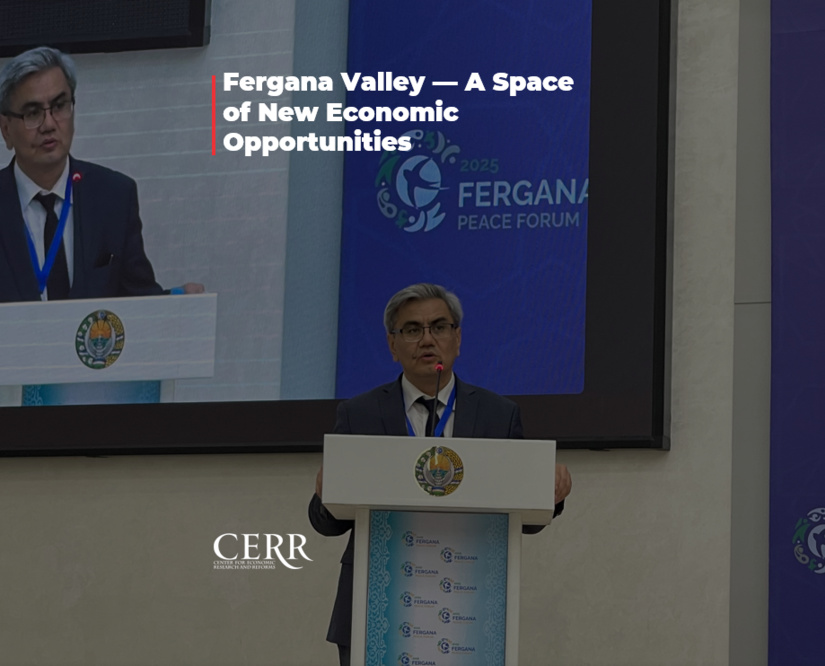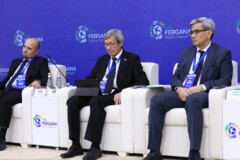Mr. Khakimov emphasized that the historic Border-Junction Agreement signed in March in Khujand laid the foundation for long-term stability. “Our task for the coming years is to convert the ‘peace dividend’ into lasting growth, dependable supply chains, and higher incomes for families throughout the valley” – he noted.
CERR presented an updated analysis of the socio-economic development of the Fergana Valley. Over the past eight years, the valley’s total regional gross product (in current prices) has nearly quadrupled – from $7.9 billion to $19.8 billion, while the real growth amounted to about 60%, compared to 56% for the country as a whole. The valley’s share in Uzbekistan’s GDP has reached 17.2%. Despite a 15% increase in population, real GRP per capita rose by 37%.
Based on CERR’s estimates using satellite Night-Light data from 2020 to 2024, average per-capita income in the Fergana Valley increased by 68%, from $1.8 thousand to $3 thousand.
The industrial profile is shifting. The share of services has grown to 40.3%, and the share of industry and construction to 28%, while agricultural output itself rose by one third. The valley’s exports increased 2.4-fold to $2.7 billion, and Uzbekistan’s mutual trade with Kyrgyzstan and Tajikistan grew more than threefold to $1.6 billion.
Between 2017 and 2024, investment projects worth $31.2 billion were implemented and over 975,000 jobs were created. The poverty rate declined from 13.9% to 8.6%.
Particular attention was given to projects forming a “cross-cutting” growth infrastructure. The Kokand Free Economic Zone was expanded by 210 hectares, with plans to attract about $1 billion in investment and create 12,000 jobs by the end of 2026. Modernization is underway at the airports and cargo hubs in Namangan and Andijan, and new industrial sites and tourism clusters are emerging – reducing logistics costs and strengthening the region’s export base.
Based on CERR’s analysis, Obid Khakimov proposed a package of practical initiatives, including the unification of border procedures and the launch of “green corridors,” the creation of joint industrial and agro-processing clusters, the development of logistics hubs and cargo infrastructure, programs for training and retraining workers, and the coordination of water-energy and green projects with access to long-term financing.
In conclusion, the CERR Director noted the need to move from a set of bilateral agreements to a systemic trilateral cooperation among Uzbekistan, Tajikistan, and Kyrgyzstan – introducing unified border standards, synchronizing infrastructure investments, and launching joint production projects that will consolidate stability and accelerate the economic development of the Fergana Valley.
You can read the full text of the report and view the infographics — here.






















leave a comment